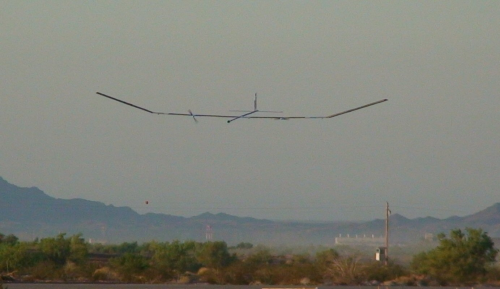
The latest test sequence focused on evaluating potential payloads as well as advancing the concept of operations (conops) for operating long-endurance aircraft for in excess of five days.
The QinetiQ Zephyr concept is designed to offer solar-powered, persistent coverage with continuous mission durations of up to three months at a revolutionary low-cost per flight-hour. Capable of carrying a variety of payloads, the applications of the hand-launched system include wide area surveillance, communications relay, specific target monitoring, anti-piracy efforts, route monitoring, counter-IED, border security, and local area security.
The ultra-lightweight carbon-fiber Zephyr weighs less than 100 lb (45 kg), yet has a wingspan of up to 75 ft (23 m). The Zephyr is solar-powered during the day, using paper-thin United Solar Ovonic amorphous silicon arrays that cover the aircraft’s wings. At night it is powered by lithium-sulfur batteries, supplied by SION Power Corporation, which are recharged during the day using solar power.
The US Army’s Yuma proving ground in Arizona was the site of Zephyr’s world-beating three-and-a-half day flight in July 2008 – the fourth of a series of flight trials that have been flown in the US since 2005.





